Irina Viner-Usmanova Rhythmic Gymnastics Center in the Luzhniki Complex, Moscow
A Russian example of the OPEN BIM approach
The Moscow architecture firm, CPU Pride, presents the design process that led to a new sports facility, which also won “BIM 2016,” the Russian national BIM technology competition.

Irina Viner-Usmanova Rhythmic Gymnastics Center in the Luzhniki Complex, Moscow, Russia | Rendered Image | Image courtesy of CPU Pride | www.prideproject.pro
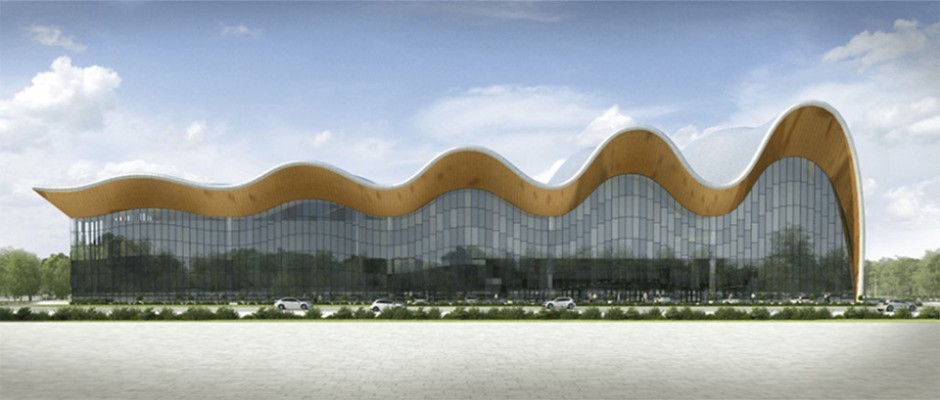
Irina Viner-Usmanova Rhythmic Gymnastics Center in the Luzhniki Complex, Moscow, Russia | Rendered Image | Courtesy of CPU Pride
ARCHICAD is BIM
The Pride company was founded in 2013. Its founders are professionals with vast experience in implementing large and technologically complex buildings. Today, the company employs more than 60 highly-qualified specialists, including 30 architects. Pride not only provides an architectural design but also master plan development, structural and engineering solutions. The company handles a full line-up of services: from creating concepts to leveraging urban potential; creation of design development (DD) and construction documentation (CD) of buildings and supervision of the construction phase.
One of the most important priorities for the company is the widespread use of building information modeling technologies. Performing complex tasks requires a comprehensive BIM solution that can serve as the principal tool for coordinating the work of architects, designers, and engineers of all related specialties. BIM technology provides an integrated design approach throughout all the stages of the building life cycle.
The desire to offer customers unique architectural solutions and the ability to implement complex tasks was prompted by the company’s management and resulted in the implementation of ARCHICAD: a program that doesn’t require a time-consuming setup.

Irina Viner-Usmanova Rhythmic Gymnastics Center in the Luzhniki Complex, Moscow, Russia Renders were created using the architectural model | Image courtesy of CPU Pride
Details are central
One of the recent projects developed by the Pride company is the Irina Viner-Usmanova Rhythmic Gymnastics Center, completed in 2019. The center, which is in Moscow’s Luzhniki Olympic Complex, seats 4,000 and is ready to host competitions and training events. Its features include partially transformable tribunes and VIP boxes. Its appearance conveys a unique roof shape resembling the wave of a gymnastics ribbon.
“During the initial stage, we created a preliminary concept rather quickly, consisting of several completely different solutions, such as extraordinary forms, or a more geometric appearance maintaining a clear rhythm of the façade. The customer chose the form of a ribbon fluttering above the ground. We were able to develop the first 3D model in less than a month,” says chief architect of the Pride company, Elena Myznikova.
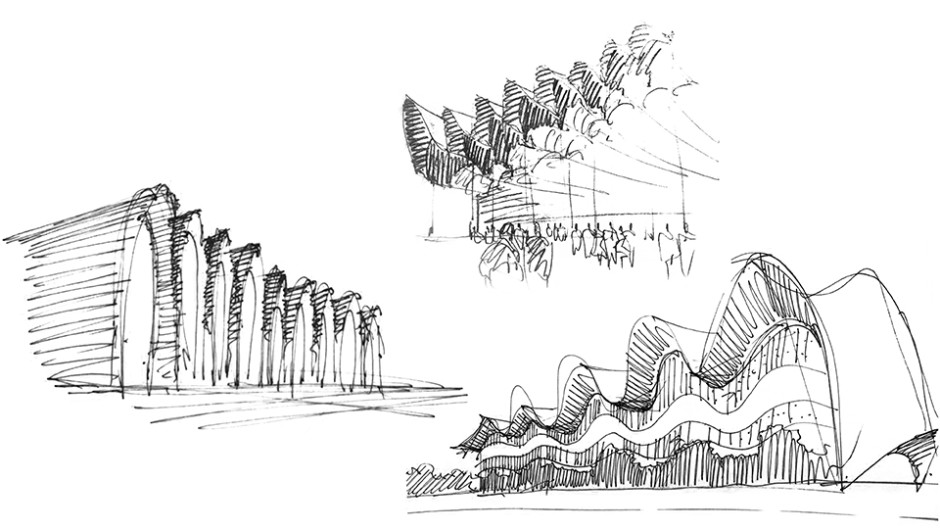
A single model from concept to documentation
The project won the “BIM 2016” Russian competition in the “BIM project: sports facilities” category, and demonstrates the successful use of the OPEN BIM approach in its design. The exchange of data between software platforms was carried out using the open IFC format developed by buildingSMART (International Alliance for Interoperability, IAI).
The architectural part of the project was carried out by the Pride Company. The main tools for the Design Development and Construction Documentation phases were ARCHICAD and Rhinoceros/Grasshopper. The final demo model was done in ARCHICAD, with nested Xref files, structural elements, etc. The complex design of the roof was created in Rhinoceros/ Grasshopper. Its structural and engineering solutions were developed by the Metropolis company using a software for engineers.
BIMx Hyper-model of the project

The hand sketches were recreated as the ARCHICAD 3D model, while the render was created using 3ds Max | Image courtesy of CPU Pride
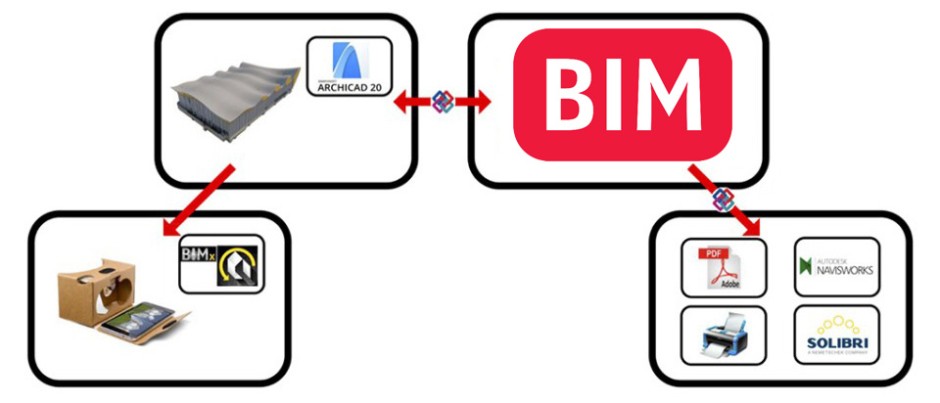
Architectural project issue scheme | Image courtesy of CPU Pride
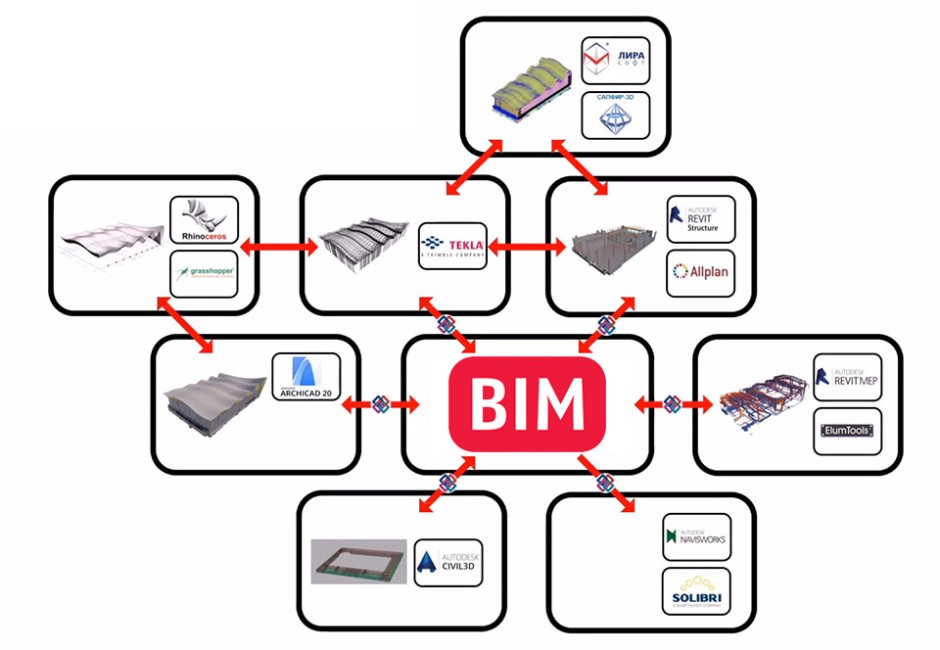
Scheme of stakeholder interactions during the design development phase | Image courtesy of CPU Pride
Each project starts with a concept and brainstorming session. The first pencil sketches were recreated in ARCHICAD as a 3D model. Visualization was created using 3ds Max. The process of BIM design started at this stage: the model contained essential information about the materials needed and became the basis for the first client meeting.
During the concept stage of development, the floor areas, ceilings and floor finishes, opening quantities and other common parameters were defined. For coordination of the concept with the general designer, Mosinzhproekt, and the client, Pride used BIMx – a handy tool for viewing BIM models on mobile devices. All project files and documentation drawings were combined into a single Hyper-model and displayed using BIMx. Thus, the Pride company was able to rotate the project in a 3D environment to allow consideration of additional details.
After approval of the concept, the architectural model was transferred to the relevant consultants using the IFC format. For each contractor, the file was prepared separately in ARCHICAD: some subcontractors didn’t need a roof, while others didn’t need concrete structures. To locate errors, the Solibri Model Checker application was used to perform collision detection analysis of information models.
At the same time, we made a parametric model of the roof using the Rhinoceros and Grasshopper-ARCHICAD Live Connection, which determined the options for the optimization of the metal frame elements. With this information, the manufacturer of the standing seam roof presented examples of the roof panel arrangements that were possible, based on the load-bearing capabilities of the metal sheets. The calculated parameters helped to determine the optimal shape of the roof.
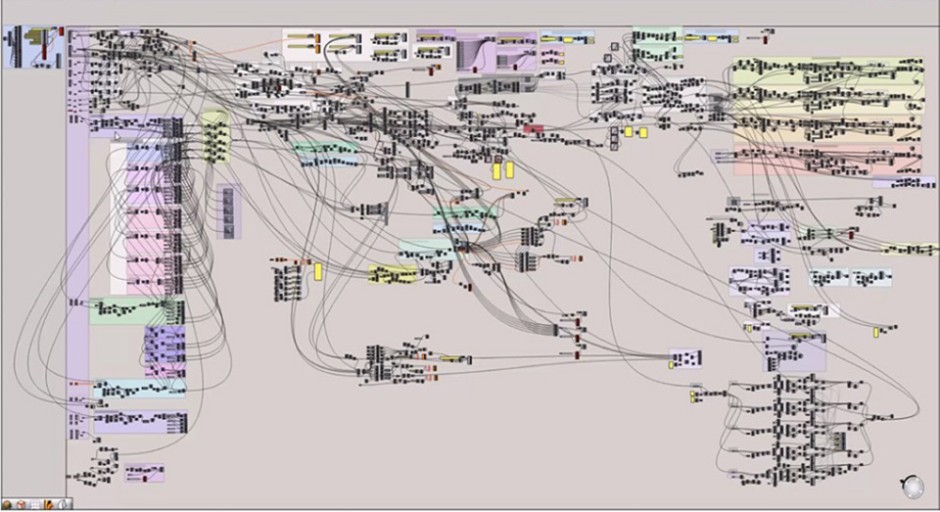
Grasshopper script of the roof | Image courtesy of CPU Pride
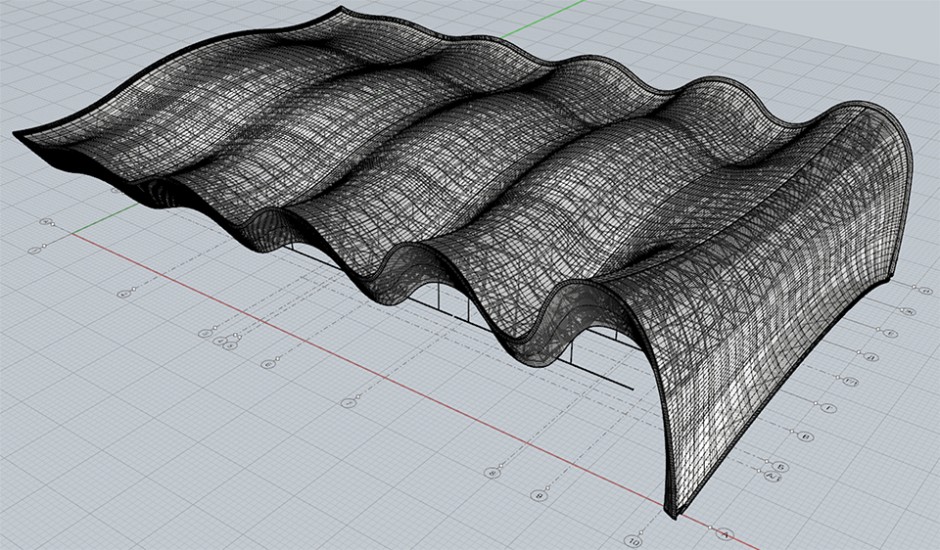 And the result of the script in Rhino | Image courtesy of CPU Pride
And the result of the script in Rhino | Image courtesy of CPU Pride

Checking collisions in Solibri Model Viewer | Image courtesy of CPU Pride
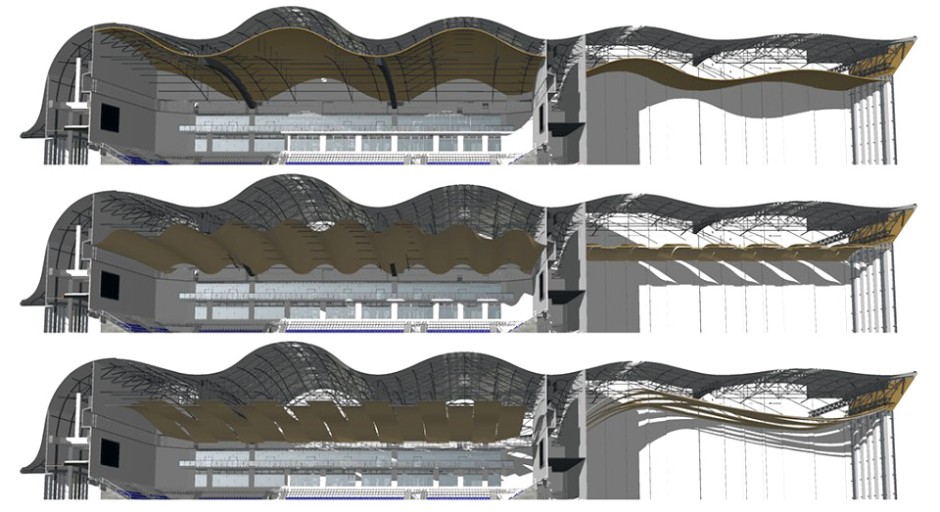 Design variations in ARCHICAD | Image courtesy of CPU Pride
Design variations in ARCHICAD | Image courtesy of CPU Pride
BIM-duet: architects + engineers
In the next stage (DD), the architects continued to work with Metropolis, which specializes in the development of structural and engineering solutions and uses different software. A reinforced concrete structural model was created in Allplan, and then through SAPPHIRE, the file was transferred to a local analytic program, LIRA-SAPR. The metal structural model was developed in Tekla Structures and was sent through an analysis application as well. “BIM helps prevent human error. The first HVAC model we got from the engineers in the DD phase contained 1,800 collisions. And this, by the way, is not that many. Using 2D drawings, it would be simply impossible to detect all of these conflicts,” said Vitaliy Krestianchik, chief architect of the Pride company.
The building engineering systems were developed in Revit and MagiCAD. The IFC translators to save and import the first versions of these models – obtained from the engineers – required several days to set up. For the engineers, it was important to correctly save, and for architects to correctly import the data. After an exchange of models, collision detection, and further error corrections, the documentation development began.
 The complete BIM model together with the engineering and structural sections | Image courtesy of CPU Pride
The complete BIM model together with the engineering and structural sections | Image courtesy of CPU Pride
 Structural elements shown in ARCHICAD – The structural model was created and imported from Tekla | Image courtesy of CPU Pride
Structural elements shown in ARCHICAD – The structural model was created and imported from Tekla | Image courtesy of CPU Pride
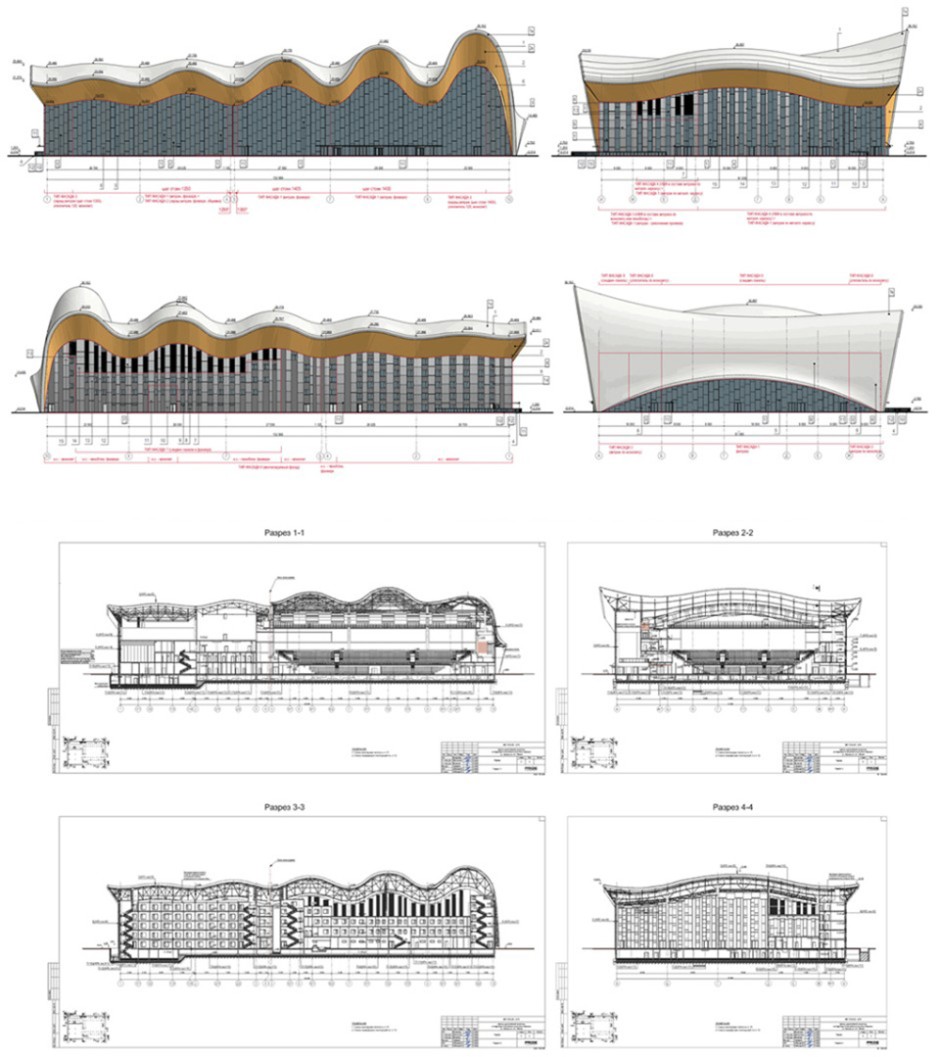 Documentation in ARCHICAD | Image courtesy of CPU Pride
Documentation in ARCHICAD | Image courtesy of CPU Pride
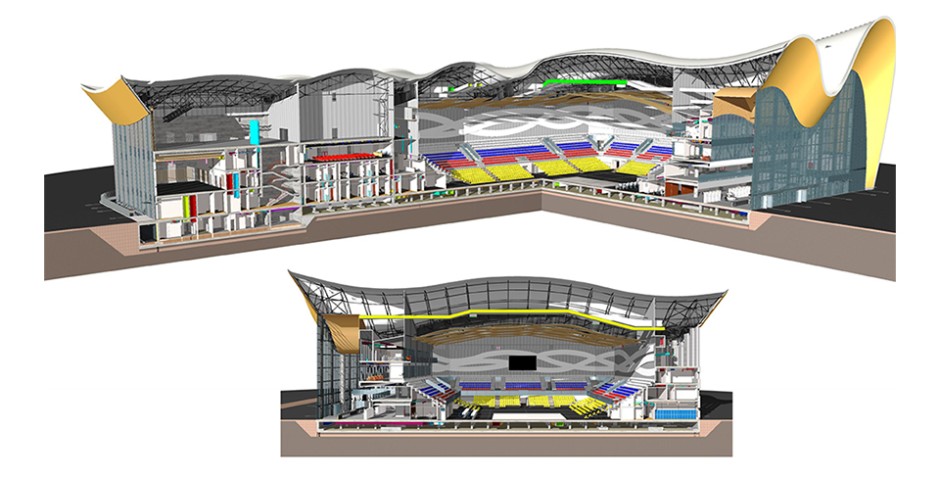 3D cuts of the architectural model | Image courtesy of CPU Pride
3D cuts of the architectural model | Image courtesy of CPU Pride
Teamwork workflow in ARCHICAD
Despite the complexity of the facility, thanks to ARCHICAD, the company managed to complete the project without hiring additional employees or BIM specialists. General BIM coordination of all disciplines and the workflow management during the DD and CD phases was carried out by a single architect. His tasks included the organization of teamwork in a single common shared project file. This entire process was based on the ARCHICAD Teamwork feature.
 ARCHICAD’s Graphic Override feature allows you to apply preset parameters for different display versions | Image courtesy of CPU Pride
ARCHICAD’s Graphic Override feature allows you to apply preset parameters for different display versions | Image courtesy of CPU Pride
Data security levels and access rights to the model were determined by the BIM coordinator and depended primarily on the experience and skill of the technician. The BIM coordinator also placed limits on the creation and configuration details of layers in the project. The number of architects connected to the project at one time was no more than 15. Discussion of design solutions was streamlined with the help of the built-in Teamwork messaging service. The use of Teamwork significantly simplified the process of the model coordination. The processing time was reduced, and the performance of the team was significantly increased.
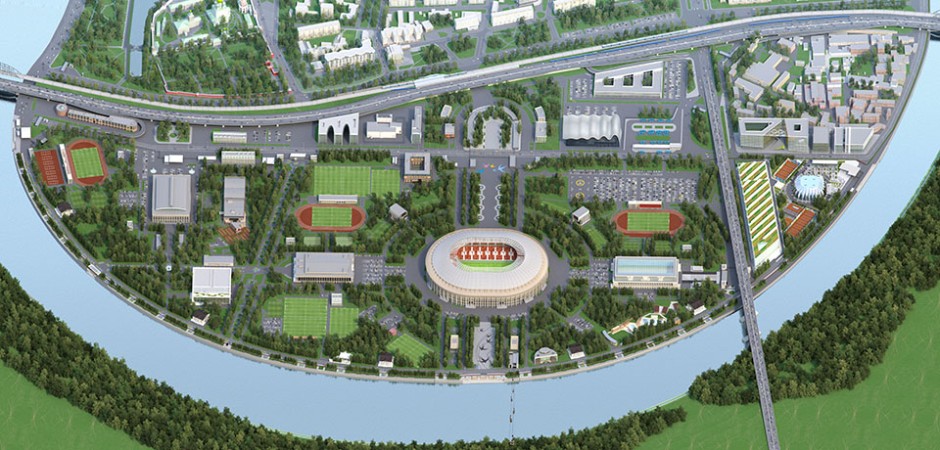 The Luzhniki Olympic Complex | Image courtesy of CPU Pride
The Luzhniki Olympic Complex | Image courtesy of CPU Pride
The versatility of the OPEN BIM approach
The project is now in the construction development phase and is kept in a single BIM model. The OPEN BIM approach has proven its versatility. The OPEN BIM-based IFC file format is a universal language that enables the interaction of all project participants, regardless of the software they use and ensures the quality of data transmission. The design company followed the Russian and international standards of BIM implementation.
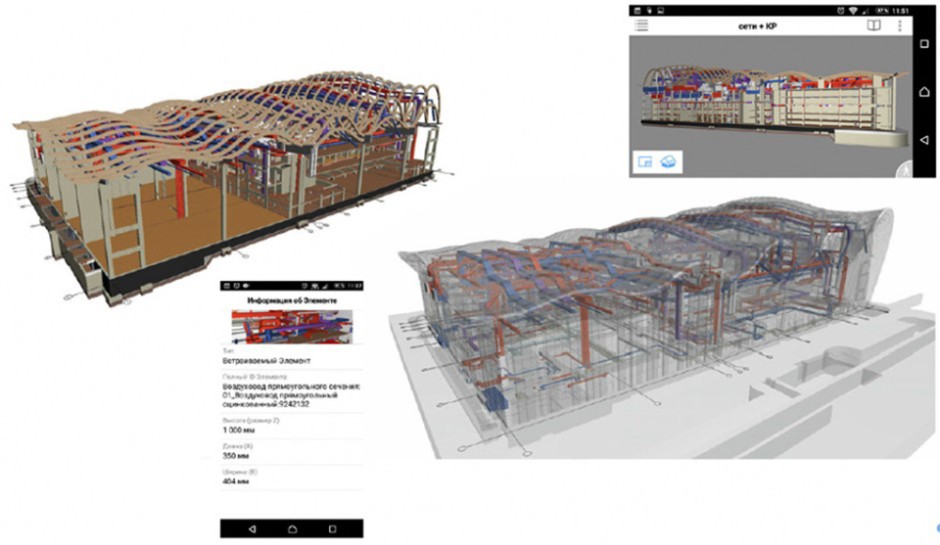 Displaying information about the BIM project in the BIMx mobile app | Image courtesy of CPU Pride
Displaying information about the BIM project in the BIMx mobile app | Image courtesy of CPU Pride
 Irina Viner-Usmanova Rhythmic Gymnastics Center in the Luzhniki Complex, Moscow, Russia | Rendered Image | Courtesy of CPU Pride www.prideproject.pro
Irina Viner-Usmanova Rhythmic Gymnastics Center in the Luzhniki Complex, Moscow, Russia | Rendered Image | Courtesy of CPU Pride www.prideproject.pro
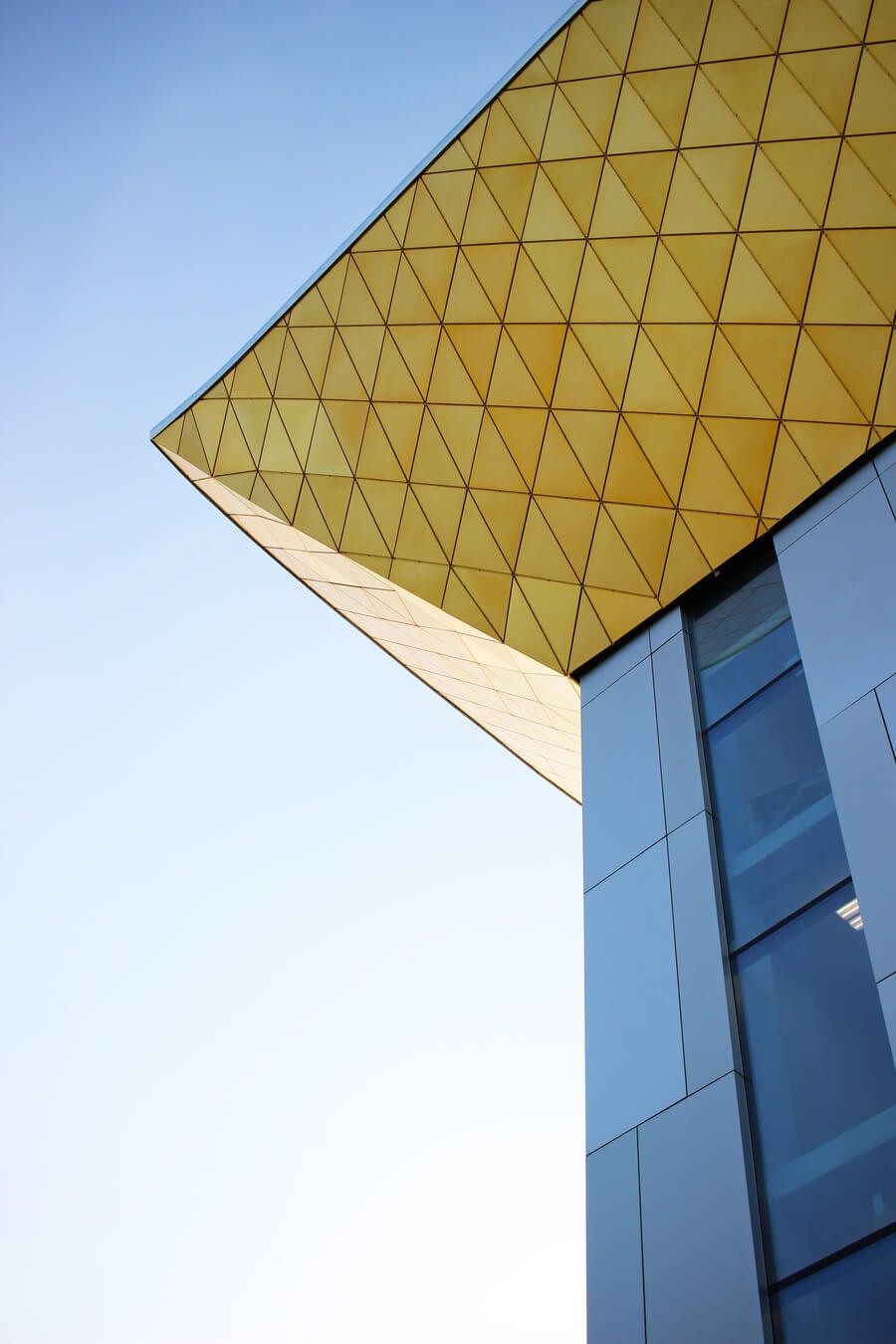 |
 |
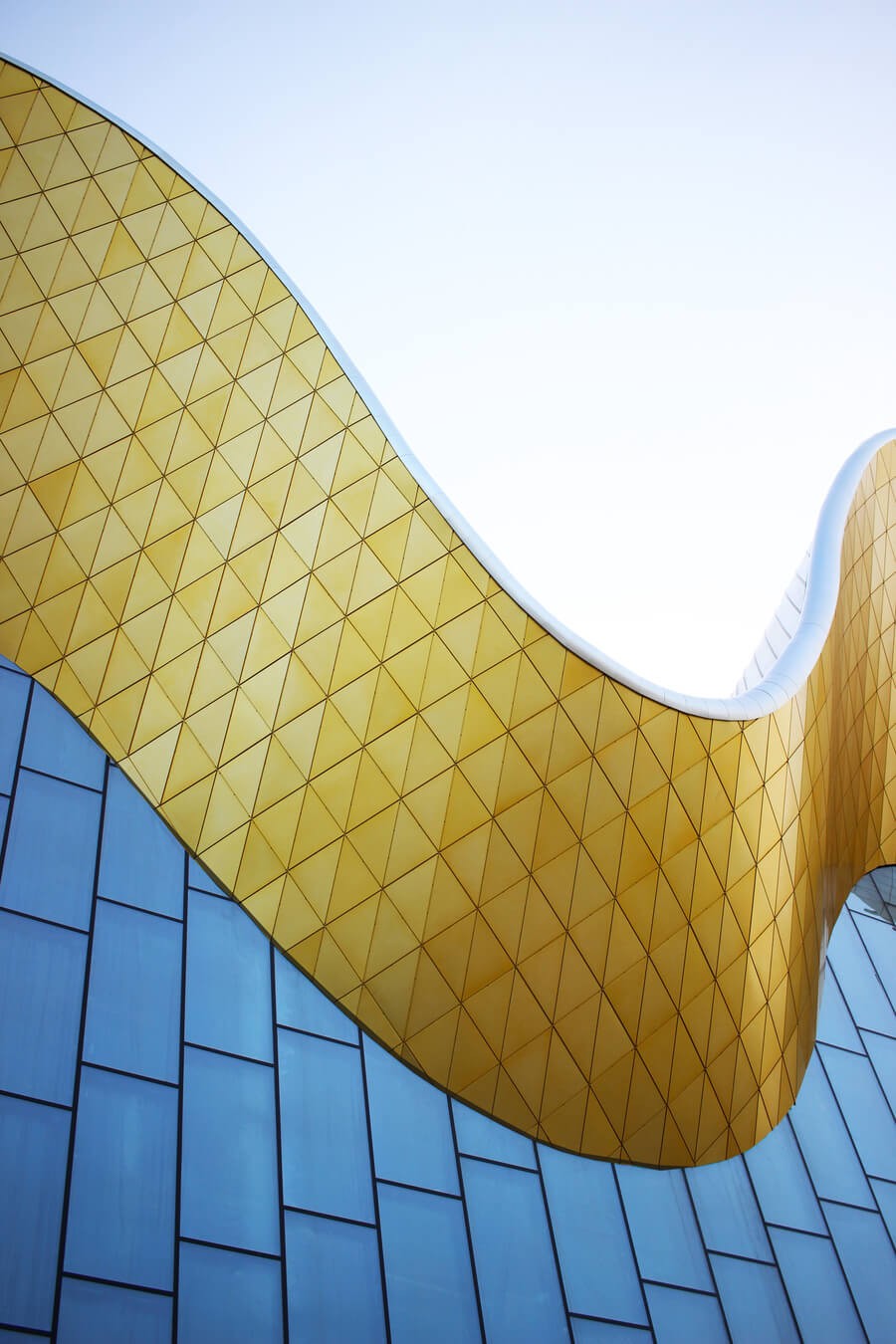 |
Irina Viner-Usmanova Rhythmic Gymnastics Center in the Luzhniki Complex, Moscow | Photos: Vitaliy Krestianchik
Source: Graphisoft
